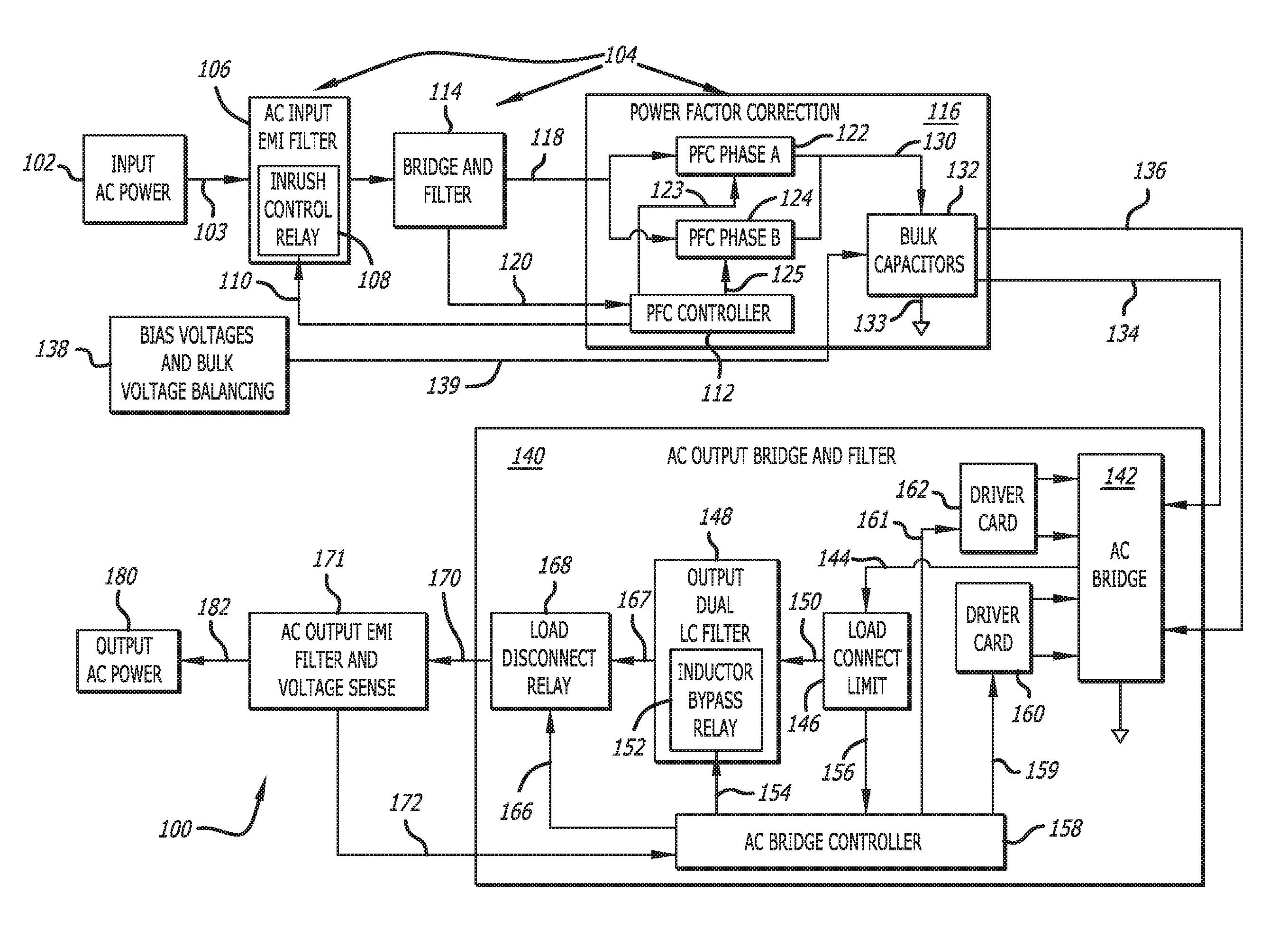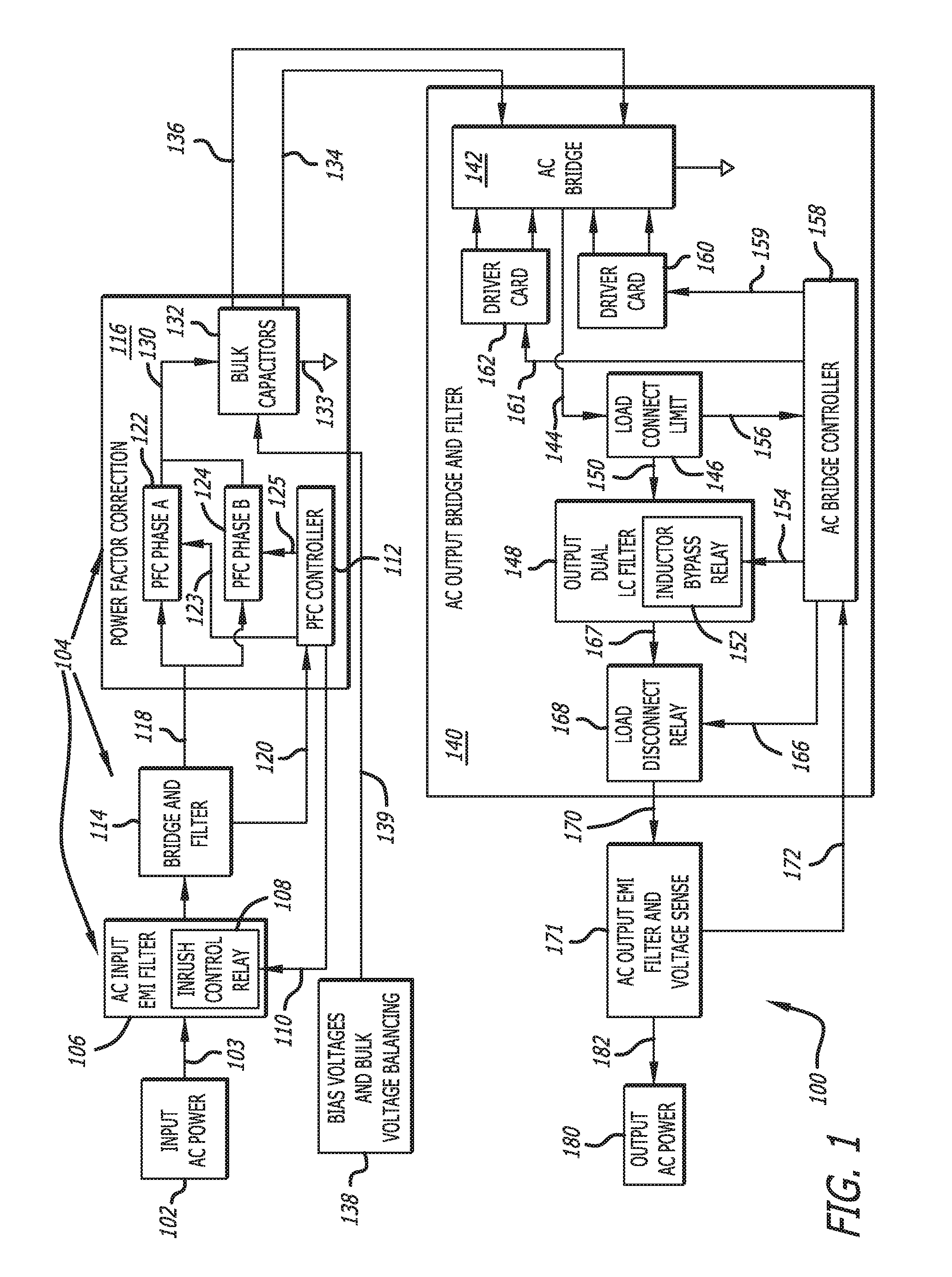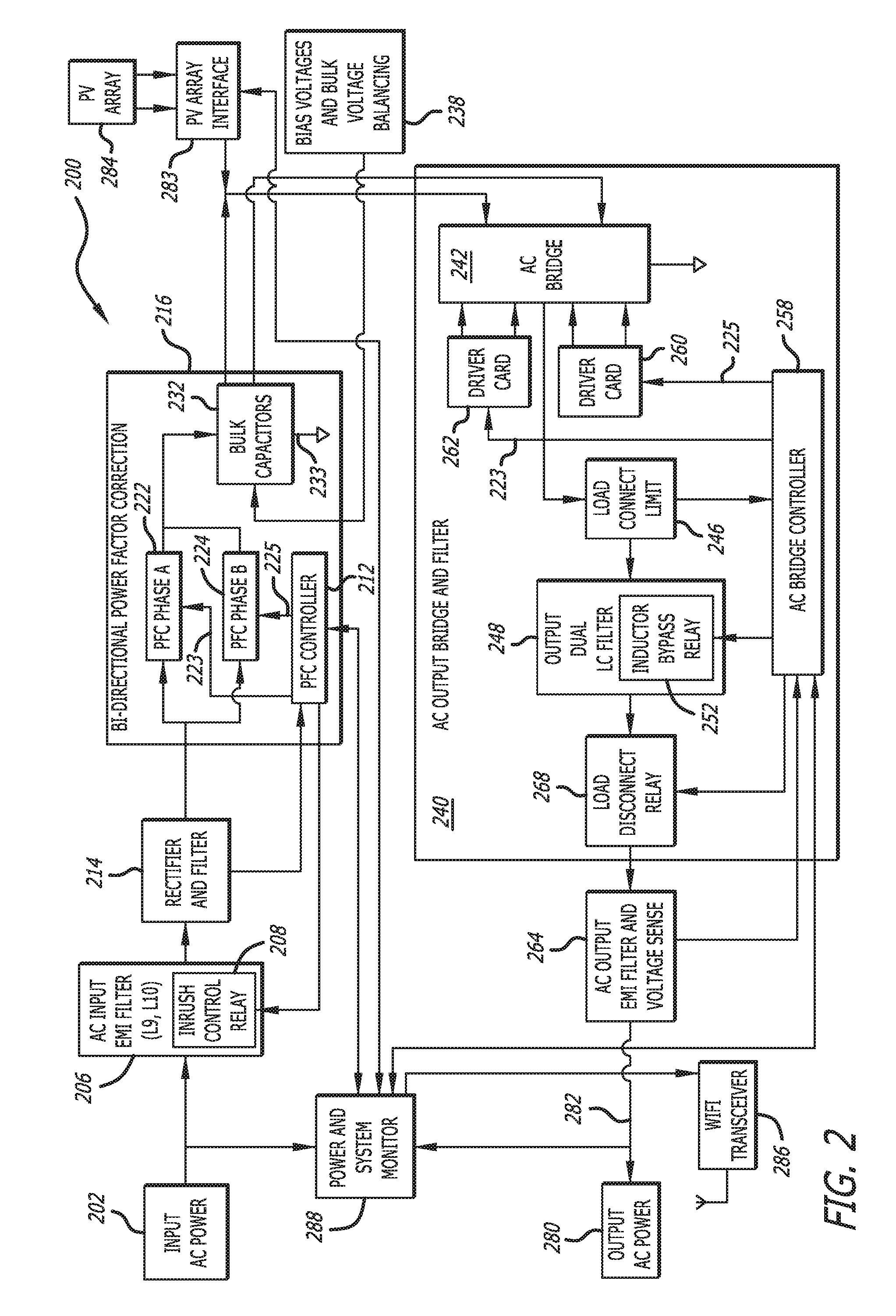Adaptive AC power exchanger
a technology ac power exchanger, which is applied in the direction of dc-ac conversion without reversal, efficient power electronics conversion, climate sustainability, etc., can solve the problems of inability to adapt to the needs of ac power exchangers, inability to properly operate on 60 hz power, and patents that do not take into account, so as to improve the efficiency of inverters and reduce ripple currents , the effect of increasing
- Summary
- Abstract
- Description
- Claims
- Application Information
AI Technical Summary
Benefits of technology
Problems solved by technology
Method used
Image
Examples
Embodiment Construction
[0033]Referring to FIG. 1 in conjunction with the specific circuit embodiment shown in FIGS. 3-5, an adaptive AC power exchanger system 100 is coupled between an AC source 102 and a load 180 such as a home appliance. The AC source 102 may be a connection to a utility grid which, in the embodiment illustrated hereafter, will generally provide 220 VAC, 50 Hz power although the power may vary in both frequency and voltage over time. For example the voltage may vary from 180 VAC to 280 VAC and frequency from 40-60 Hz. Furthermore, the AC power provided on the grid by the utility may be intermittent.
[0034]The load 180 will generally be an appliance with motors, servos and the like as well as timing circuitry to control the sequence and timing of the motors and servos of the appliance. The power to drive those appliances must be substantially stable, in the embodiment illustrated, will be 120 VAC, 60 Hz. Accordingly the adaptive AC power exchanger must be able to accept power with variabl...
PUM
 Login to View More
Login to View More Abstract
Description
Claims
Application Information
 Login to View More
Login to View More - R&D
- Intellectual Property
- Life Sciences
- Materials
- Tech Scout
- Unparalleled Data Quality
- Higher Quality Content
- 60% Fewer Hallucinations
Browse by: Latest US Patents, China's latest patents, Technical Efficacy Thesaurus, Application Domain, Technology Topic, Popular Technical Reports.
© 2025 PatSnap. All rights reserved.Legal|Privacy policy|Modern Slavery Act Transparency Statement|Sitemap|About US| Contact US: help@patsnap.com



